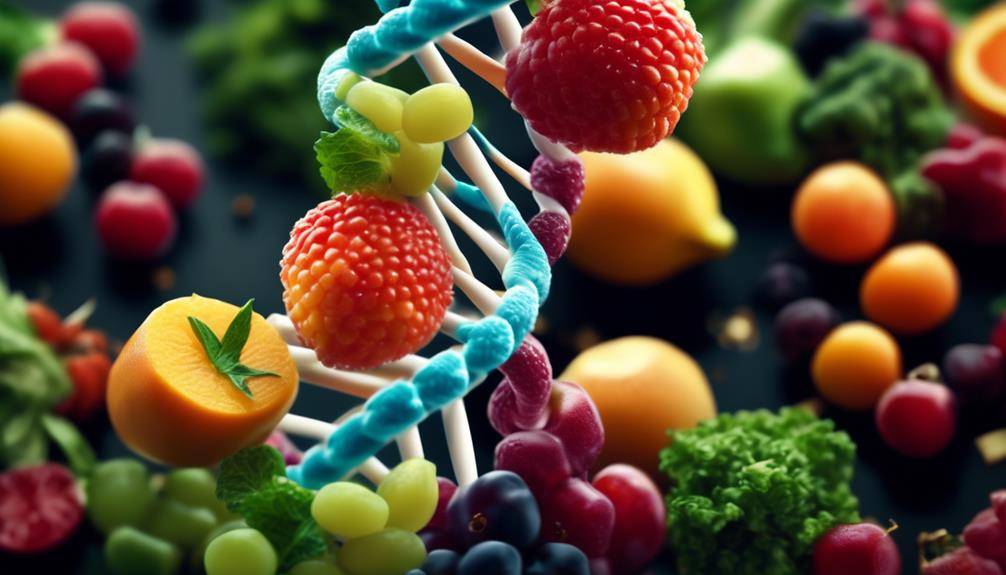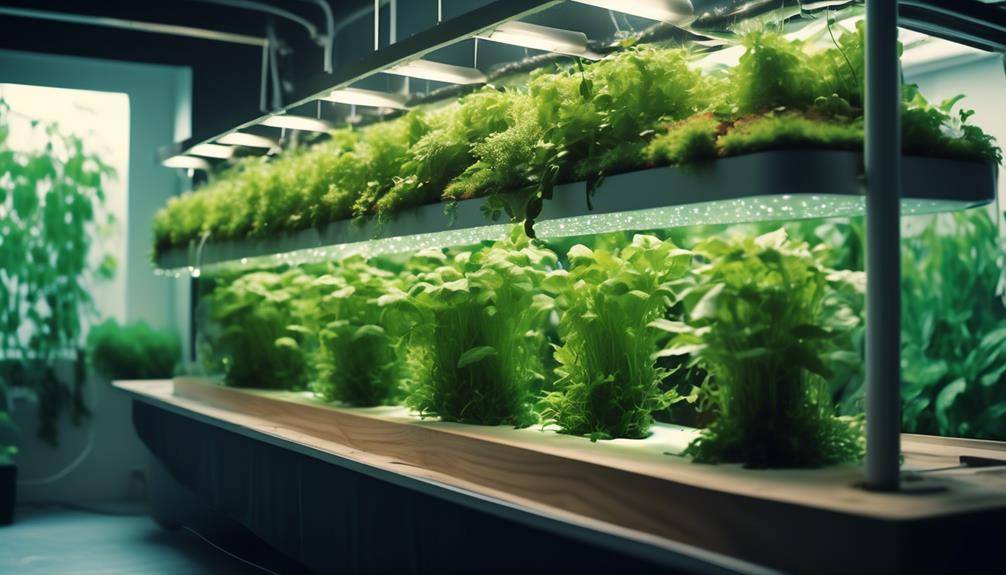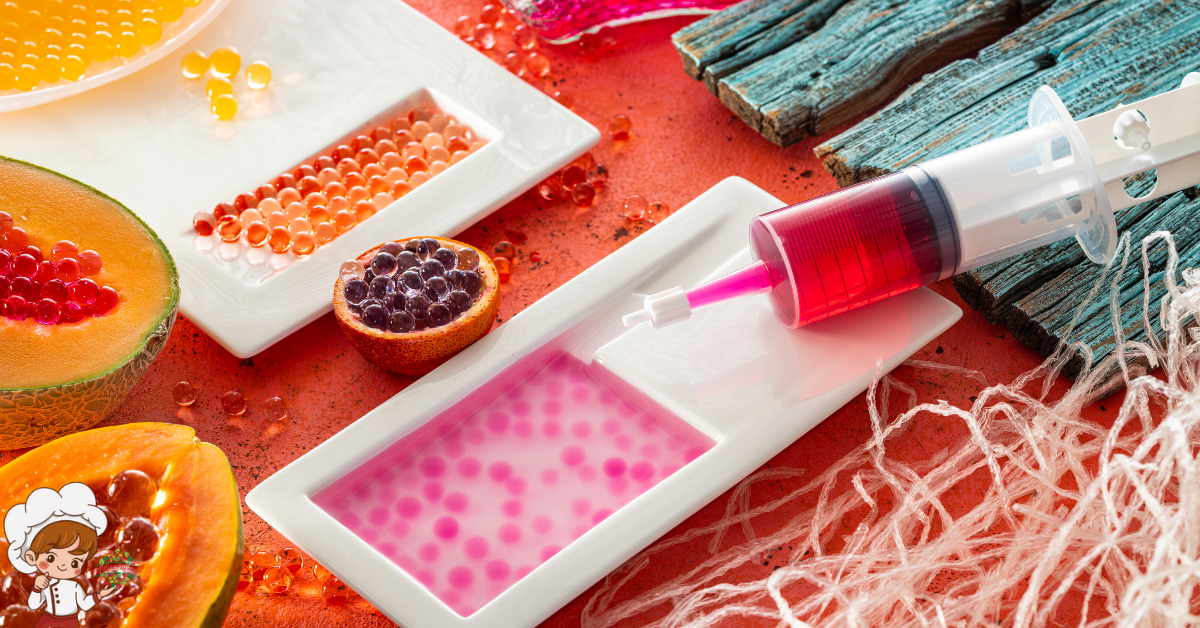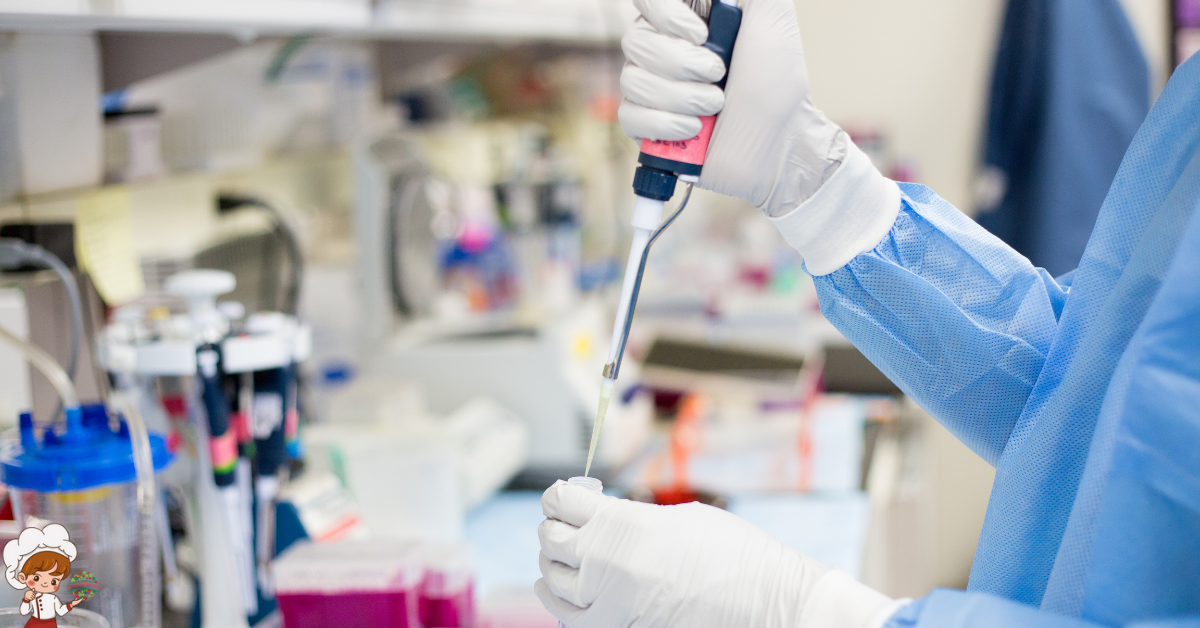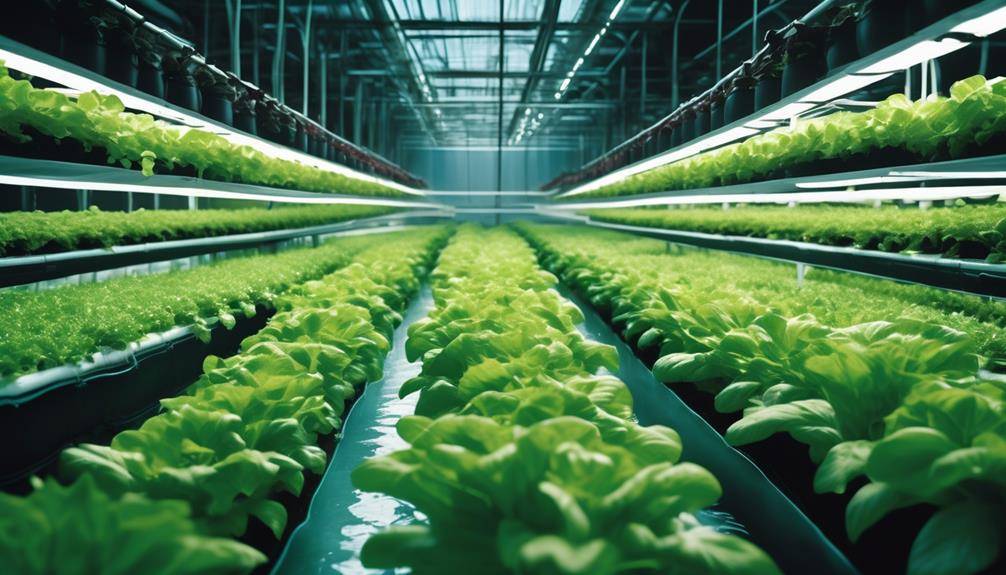Amazing 3D Food Printing And Molecular Gastronomy
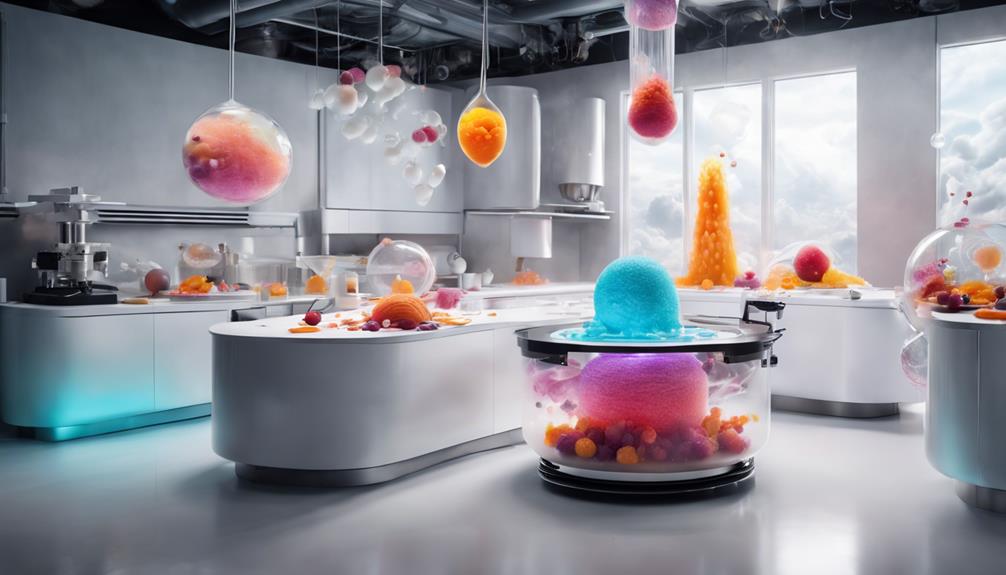
Amazing 3D Food Printing And Molecular Gastronomy merge technology with culinary art, creating a new dimension in dining. You can customize shapes, textures, and flavors to fit your preferences. This innovative approach encourages experimentation, allowing you to push the boundaries of traditional cooking. Molecular gastronomy enhances the sensory experience by applying scientific principles to flavors and presentations. Techniques like spherification and sous-vide give you the chance to explore unique ingredient combinations. Together, they transform ordinary meals into extraordinary experiences, making every bite a delight. If you’re curious about how this impacts sustainability and future trends, there’s plenty more to discover.
Understanding 3D Food Printing
3D food printing is revolutionizing how we think about cooking and food preparation. It’s not just a trend; it’s a game-changer that merges technology with culinary creativity. Imagine designing your meals in a way that was previously confined to your imagination. With 3D printing, you can create intricate shapes, textures, and flavors that enhance your dining experience.
When you immerse yourself in food design, you’ll discover a world where ingredients are transformed into art. You can customize dishes to suit your taste or dietary needs, making food more accessible and exciting. This technology allows you to experiment, pushing the boundaries of traditional cooking methods. Instead of following recipes, you can play with flavors and materials, leading to innovative dishes that surprise and delight.
As you explore 3D food printing, you’ll find it fosters a new level of engagement with your meals. You’re not just consuming food; you’re participating in a creative process that elevates your culinary skills. This blend of technology and artistry invites you to rethink what’s possible in the kitchen, making cooking a truly interactive experience.
Key Technologies in 3D Printing
When exploring key technologies in 3D printing, you’ll want to focus on the materials and ingredients that bring your creations to life. You’ll also need to contemplate the software and design tools that help you craft your ideas into reality. Finally, understanding the various printing techniques and methods will enhance your ability to produce innovative food designs.
Printing Materials and Ingredients
Innovation in food technology hinges on the materials and ingredients used for 3D printing. The choice of printing materials is vital, as they directly influence the texture, taste, and visual appeal of your creations. You’ll find a variety of options ranging from pureed fruits and vegetables to chocolate and dough. Each material requires careful consideration of its ingredient compatibility to guarantee successful printing and ideal flavor profiles.
When you select materials, think about viscosity and how well they can flow through the printer’s nozzle. Higher viscosity materials may need adjustments in temperature or additives to achieve the right consistency. Experimenting with different combinations can lead to unexpected, delicious results.
Moreover, consider how the ingredients interact with one another during the printing process. Some materials might not hold their shape when combined, while others can enhance the final product’s aesthetics. By mastering ingredient compatibility, you can create stunning, multi-textured dishes that delight the senses.
Ultimately, understanding printing materials and their properties will empower you to push the boundaries of culinary art, allowing you to craft unique, edible masterpieces.
Software and Design Tools
Utilizing advanced software and design tools is crucial for successfully creating intricate food designs through 3D printing. You’ll find that design software plays a critical role in your creative process, enabling you to visualize and manipulate your culinary creations. With user-friendly interfaces, these tools simplify the often complex workflow involved in culinary programming.
Digital prototyping lets you experiment with ingredient modeling, helping you visualize how different textures and flavors can come together. You can also take advantage of customization tools that allow you to tailor recipes to specific dietary needs or personal preferences. This guarantees that each creation is not just visually appealing but also aligns with your culinary goals.
Moreover, simulation software can help you predict how your designs will behave during the printing process, reducing the likelihood of errors. By leveraging recipe management features, you can easily organize and retrieve your favorite recipes, making it easier to replicate successful dishes. In sum, investing time in mastering these software and design tools will greatly enhance your 3D food printing experience, leading to innovative and delightful culinary masterpieces.
Printing Techniques and Methods
3D food printing relies on various techniques and methods that transform digital designs into edible creations. These printing technologies enable you to explore culinary creativity like never before. You can manipulate textures and layer ingredients to create visually appealing dishes that tantalize the senses.
By utilizing process automation, you streamline the printing process, allowing for efficient production without sacrificing quality. Design enhancement plays an essential role, ensuring your creations not only look good but also provide ideal sensory experiences. Flavor pairing is fundamental, as it enhances the taste profiles of your printed foods, making them more enjoyable.
Nutritional analysis is another key aspect to take into account, as it allows you to craft dishes that meet dietary needs without compromising on aesthetics or flavor. With the right combination of ingredient layering and texture manipulation, you can create unique edible art that delights both the eyes and the palate.
Ultimately, mastering these printing techniques opens up a universe of possibilities, allowing you to push boundaries in the culinary domain and redefine how we experience food. Embrace the innovation of 3D food printing and let your creativity shine.
The Role of Molecular Gastronomy
Molecular gastronomy transforms traditional cooking by applying scientific principles to food preparation, enhancing both flavor and presentation. As you explore this innovative approach, you’ll discover how it elevates sensory experiences, making dining more immersive and engaging. By understanding the science behind cooking, you can manipulate textures, temperatures, and flavors in ways that traditional methods simply can’t achieve.
This discipline encourages culinary creativity, allowing you to experiment with new techniques and ingredients. Imagine transforming a simple soup into a delicate foam or crafting a dessert that bursts with flavor when bitten. These surprising elements not only delight the palate but also create memorable moments at the dining table.
With molecular gastronomy, you’re not just a cook; you’re an artist. You have the power to challenge conventional dishes and push the boundaries of what food can be. This fusion of science and art transforms meals into multi-sensory experiences, inviting your guests to explore flavors and textures in unexpected ways. Embrace the role of molecular gastronomy in your kitchen, and you’ll find that ordinary meals can become extraordinary culinary adventures.
Techniques in Molecular Gastronomy
Explore the exciting techniques in molecular gastronomy that can transform your cooking. By diving into food science, you’ll discover innovative cooking techniques that push the boundaries of traditional culinary creativity. Start with flavor pairing; experimenting with unexpected combinations can lead to delightful surprises on the palate.
Ingredient exploration is another key aspect. Use sous-vide or spherification to manipulate textures, creating surprising sensations in each bite. Texture manipulation allows you to craft dishes that challenge expectations—think creamy foams or crunchy pearls that burst with flavor.
Don’t overlook plating artistry; it’s essential for enhancing sensory experiences. The way you present your dish can elevate its appeal, inviting diners to engage with your gourmet experimentation.
Understanding molecular interactions will help you achieve precise results. For example, emulsification can create rich sauces that cling beautifully to your ingredients.
Benefits of 3D Food Printing
With 3D food printing, you can customize meals to fit your tastes and dietary needs like never before. This technology not only allows for personalized dishes but also helps reduce food waste by using only the ingredients you need. Let’s explore how these benefits can transform your dining experience.
Customization and Personalization
One of the standout benefits of 3D food printing is its ability to offer customization and personalization like never before. You can tailor meals to satisfy individual taste preferences and dietary restrictions, ensuring that everyone at the table enjoys their dining experience. Whether you’re accommodating gluten-free needs or vegan choices, 3D food printing lets you create dishes that align with specific health considerations.
Moreover, you can draw on cultural influences to craft meals that resonate with different backgrounds, making gatherings more meaningful. The technology allows for precise ingredient sourcing, enabling you to choose the freshest and most nutritious elements, enhancing both flavor and quality.
In addition to taste and health, 3D printing elevates meal aesthetics, transforming ordinary dishes into visual works of art. This innovation not only meets current food trends but also redefines cooking methods, offering a new avenue for culinary creativity. You can explore unique sensory experiences, combining flavors and textures in ways that surprise and delight. Ultimately, 3D food printing enriches dining experiences, allowing you to experiment and engage with food like never before.
Waste Reduction Techniques
3D food printing is revolutionizing the way we think about food waste. By utilizing innovative waste reduction techniques, you can actively contribute to a more sustainable food system. One of the key benefits is sustainable sourcing, which allows you to select ingredients that minimize environmental impact while still delivering delicious meals.
Through food upcycling, you can turn what would normally be discarded into valuable components of your dish. For example, leftover vegetable scraps can be transformed into flavorful sauces or bases. This not only reduces waste but also enhances the culinary experience.
Ingredient repurposing is another essential aspect. You can use 3D food printers to create unique shapes and textures from what might otherwise go to waste. This adds creativity to your cooking while ensuring that every part of your ingredients finds a purpose.
Effective waste management becomes second nature when you embrace these techniques. By adopting 3D food printing, you’re not just creating meals; you’re engaging in a movement towards a more responsible and eco-friendly approach to food. Ultimately, you’ll enjoy the benefits of both delicious dishes and a reduced environmental footprint.
Challenges of 3D Food Printing
There are several challenges that come with 3D food printing, and overcoming them is vital for its widespread adoption. One major issue is the technical limitations of current printers. You need to guarantee material compatibility, as not all food substances can be extruded effectively. This leads to design complexity, where intricate shapes may compromise structural integrity. Additionally, production speed can be a concern, especially in a commercial setting where efficiency is significant.
The equipment cost can also be a barrier for many aspiring chefs and businesses. High-quality printers and materials can be expensive, limiting access. Furthermore, regulatory hurdles pose challenges, as food safety standards must be met before any product hits the market. Consumer perceptions play a role too; some people may be hesitant to accept 3D-printed food due to unfamiliarity.
Taste consistency is another important issue. You want to guarantee that the final product not only looks good but tastes great as well. Finally, scalability issues can arise when trying to mass-produce 3D-printed food, often requiring additional culinary training for chefs to navigate these new technologies effectively.
Flavor Enhancement Methods
Overcoming technical challenges in 3D food printing opens up exciting opportunities for flavor enhancement. You can immerse yourself in umami extraction to amplify savory notes, creating a deeper taste experience. By employing flavor pairing techniques, you’ll discover how certain ingredients work together to elevate dishes, making each bite a harmonious blend of flavors.
Experiment with seasoning techniques, using precise amounts to guarantee taste modulation that caters to your preferences. Consider incorporating aromatic infusions, as they add layers of scent that greatly enhance sensory stimulation. This approach not only tantalizes your taste buds but also enriches the overall dining experience.
With ingredient synergy, you can explore combinations that balance flavors, making sure no single element overwhelms the palate. Flavor layering becomes crucial as you construct complex profiles that reveal themselves with each bite.
Aesthetic Presentation in Food
The art of aesthetic presentation in food elevates dining from a mere meal to a visual experience. When you plate your dishes, consider the visual appeal that can captivate your guests. Artistic plating techniques allow you to showcase color contrast, drawing attention to the various elements on the plate. Think about how color psychology plays a role; vibrant colors can evoke excitement, while softer hues can create a calming effect.
Thematic presentation adds a narrative to your dish, inviting diners to engage with their food on a deeper level. Texture variety is essential too; incorporating different textures keeps the sensory experience dynamic and interesting. Don’t underestimate the power of garnishing techniques—simple herbs or edible flowers can transform an ordinary dish into a work of art.
Explore various plating styles, from minimalist designs that highlight the main ingredient to elaborate food sculptures that impress with their creativity. Ultimately, by focusing on these elements, you turn a meal into a feast for the eyes, enhancing the overall dining experience and leaving a lasting impression on those who enjoy your culinary creations.
Applications in Fine Dining
Fine dining’s embrace of 3D food printing is revolutionizing how chefs create and present their culinary masterpieces. You’ll find that chefs are now using advanced plating techniques to transform ordinary dishes into extraordinary visual experiences. With the ability to customize shapes, textures, and colors, 3D food printing enhances the artistry in each plate, making meals not just food, but a feast for the eyes.
Imagine sitting down to a dish that looks like a delicate sculpture, enticing you even before you take the first bite. This technology allows chefs to push the boundaries of creativity, combining flavors and textures in ways that engage all your senses. The intricate designs and unique presentations create a multisensory experience, turning dining into an event rather than just a meal.
As you savor each bite, you’ll appreciate how 3D food printing elevates the culinary experience. The fusion of technology and artistry not only excites the palate but also sparks conversation among diners. In fine dining, it’s not just about what you eat; it’s about how it makes you feel, and 3D food printing plays an essential role in crafting that unforgettable experience.
Impact on Food Sustainability
As chefs embrace 3D food printing to create stunning culinary art, this technology also holds promise for enhancing food sustainability. By leveraging resource efficiency and sustainable sourcing, you can reduce your ecological footprint while ensuring food security for your community. 3D food printing enables you to utilize ingredients that might otherwise go to waste, promoting waste valorization and ethical consumption.
This innovative approach encourages a circular economy, where you’re not just creating beautiful dishes but also minimizing environmental impact. By sourcing locally, you can support regional farmers and reduce transportation emissions, making your meals more sustainable. Plus, the precise nature of 3D printing helps retain nutrients, ensuring that your culinary creations are not only visually appealing but also healthy.
Incorporating these practices into your kitchen can lead to a more sustainable food system. You’ll contribute to a culture of responsible consumption and production, where every ingredient counts. As you explore the possibilities of 3D food printing, remember that each dish you create can be a step towards a more sustainable future, fostering a deeper connection to the food you serve and its impact on the planet.
Future Trends in Gastronomy
In the coming years, you’ll likely see a fusion of technology and culinary artistry that redefines gastronomy. As culinary innovation continues to evolve, you’ll encounter experiences that blend traditional cooking methods with cutting-edge technology. Digital gastronomy will take center stage, allowing chefs to create dishes that not only taste incredible but also look stunning and tell a story.
Imagine walking into a restaurant where you can customize your meal through an app, selecting flavors and presentations that suit your mood. Chefs will harness data to craft personalized dining experiences tailored to your preferences, dietary needs, and even health metrics. This level of customization will elevate your dining experience, making it more interactive and engaging.
Moreover, culinary schools will likely incorporate technology into their curriculums, teaching aspiring chefs about food printing and molecular techniques. You’ll also see a rise in collaborations between tech companies and culinary experts, pushing the boundaries of what’s possible in food creation. Expect to see more pop-up dining events that showcase these innovations, where you’ll taste the future of gastronomy. Embrace this exciting journey, as the world of food becomes a playground for creativity and science.
Case Studies of Innovations
You’re about to explore some groundbreaking case studies that showcase revolutionary culinary techniques and notable industry collaborations in 3D food printing. These innovations not only highlight the creativity of chefs but also tackle future trends and challenges in the food industry. Let’s see how these examples can inspire your own culinary adventures.
Revolutionary Culinary Techniques
3D food printing is transforming the culinary landscape, bringing creativity and innovation to the forefront of cooking. Imagine crafting dishes that not only taste extraordinary but also elevate food aesthetics to new heights. With this technology, you can easily experiment with culinary fusion, merging diverse flavors and textures to create unforgettable sensory experiences.
Consider the possibilities of artistic plating; 3D printers allow you to design intricate shapes, adding visual appeal that enhances the overall dining experience. By focusing on ingredient sourcing and utilizing fresh, high-quality components, you can guarantee that each dish showcases gourmet innovation.
Moreover, flavor pairing becomes an exciting adventure, as you explore unique combinations that surprise and delight the palate. Understanding cooking chemistry helps you manipulate ingredients to achieve perfect texture contrasts, making each bite an exploration of contrasts and harmony.
As you embrace these revolutionary culinary techniques, you’ll not only impress your guests but also transform how you approach the art of cooking. The future of gastronomy is here, and with it, an opportunity to redefine your culinary creations and elevate your dining experiences to new levels.
Notable Industry Collaborations
Numerous industry collaborations are pushing the boundaries of 3D food printing, showcasing innovative applications that inspire chefs and food enthusiasts alike. One standout example is the partnership between a renowned culinary institute and a food technology company. Together, they launched collaborative projects focusing on the integration of 3D printing technology into traditional cooking methods. This initiative resulted in unique culinary innovations that blend art and science, allowing chefs to create intricate designs and textures.
In another case, a famous chef collaborated with a technology firm to develop a prototype printer that customizes dishes based on nutritional requirements. This research initiative not only revolutionized meal personalization but also emphasized gastronomy advancements that cater to health-conscious consumers.
Furthermore, industry partnerships are emerging worldwide, leading to workshops and training sessions that educate chefs on the potential of 3D food printing. These chef collaborations are essential in bridging the gap between culinary arts and food technology, paving the way for exciting new dishes that redefine the dining experience. As these innovations continue to unfold, you’re bound to witness a culinary landscape transformed by the power of technology integration.
Future Trends and Challenges
As the field of food technology evolves, several emerging trends promise to shape the future of 3D food printing while also presenting notable challenges. You’ll see a growing emphasis on sustainability practices, as consumers increasingly demand eco-friendly ingredient sourcing. This shift can inspire culinary creativity, allowing chefs to experiment with new textures and flavors. However, ethical considerations also come into play, especially regarding food waste and resource allocation.
Regulatory challenges will likely hinder market adoption, as you may encounter strict guidelines governing food safety and production methods. Maneuvering these regulations requires thorough consumer education to guarantee that people understand the benefits and potential risks of 3D-printed food. As the technology advances, you’ll find that innovations in food safety protocols are crucial to gain public trust.
Moreover, collaboration between tech companies and culinary professionals will be essential for overcoming these hurdles. By fostering a deeper understanding of consumer preferences, you can help shape the future landscape of 3D food printing. Ultimately, embracing these trends while addressing their challenges will pave the way for a delicious, sustainable future in food technology.
Consumer Reactions and Trends
Embracing the novelty of 3D food printing, consumers are increasingly intrigued by its potential to revolutionize the culinary landscape. You might find yourself drawn to the unique taste experiences and innovative dining options this technology offers. As culinary expectations evolve, you seek out dishes that not only satisfy your palate but also captivate your senses. The visual appeal of 3D-printed food often enhances your overall enjoyment, making meals more than just a necessity.
Health considerations also play a significant role in your preferences. You may appreciate how 3D food printing can cater to specific dietary needs while maintaining food aesthetics that entice your appetite. The trend towards personalized nutrition reflects a growing market acceptance of these dining innovations.
Cultural influences shape your reactions, as diverse cuisines and techniques come together in exciting ways. You might feel a sense of adventure in trying new dishes that challenge traditional norms. This blending of art and technology fosters sensory engagement, inviting you to explore food in a whole new light. Ultimately, your responses to 3D food printing reflect a broader shift in how society approaches food, emphasizing creativity and personalization in every bite.
Bridging Science and Culinary Arts
As you explore 3D food printing, you’ll discover how innovative techniques are reshaping the culinary landscape. This technology not only enhances flavor but also transforms texture, creating dishes that are both visually stunning and delicious. It’s an exciting fusion of science and art that could redefine your cooking experience.
Innovative Techniques in Cooking
Revolutionizing the culinary landscape, innovative techniques in cooking are merging science with artistry to create extraordinary dining experiences. You’re no longer limited to traditional methods; instead, you can explore experimental flavors that challenge your palate and redefine what food can be. Techniques like spherification and sous-vide allow you to infuse familiar dishes with unexpected twists, engaging diners in a delightful culinary adventure.
Culinary fusion takes center stage as you blend diverse culinary traditions, creating unique dishes that surprise and inspire. Imagine the excitement of combining Japanese sushi elements with classic Italian pasta, resulting in a dish that’s both familiar and entirely new. These innovative methods empower you to experiment and push boundaries, making the kitchen a playground for creativity.
As you embrace these techniques, you’ll find yourself not just cooking but innovating. The science behind these methods enhances your understanding of ingredients and their interactions, leading to dishes that captivate the senses. So, plunge into the world of culinary innovation, and let your imagination run wild, transforming ordinary meals into extraordinary experiences that leave a lasting impression.
Enhancing Flavor and Texture
Innovative cooking techniques not only spark creativity but also provide a scientific foundation for enhancing flavor and texture in your dishes. By utilizing the principles of molecular gastronomy, you can elevate your culinary creations to new heights. One effective approach is flavor pairing, where you identify complementary tastes that work harmoniously together. For instance, combining sweet and savory elements can create a balanced profile that excites the palate.
In addition to flavor, consider the importance of texture contrast. Mixing creamy, crunchy, and tender components within a dish can deliver a multisensory experience. Think about how a velvety puree pairs with crispy toppings or how a soft cake interacts with a crunchy crust.
These techniques not only enhance the overall enjoyment of your meals but also encourage you to experiment with different combinations. As you explore the science behind these methods, you’ll discover new ways to engage your guests, making each dining experience memorable. Embrace the fusion of culinary arts and science, and watch how your dishes transform in flavor and texture, delighting everyone who tastes them.
3D Food Printing And Molecular Gastronomy: Frequently Asked Questions
How Much Does 3D Food Printing Equipment Cost?
When you’re considering 3D food printing equipment, the cost can vary widely. You’ll want to look at cost comparisons and specific equipment features, as prices can range from a few hundred to several thousand dollars.
Can Anyone Learn Molecular Gastronomy Techniques?
Absolutely, anyone can learn molecular gastronomy techniques! While there might be accessibility challenges, with dedication and resources, you can release your culinary creativity and master these innovative techniques to elevate your cooking game.
Are There Safety Concerns With 3D Printed Food?
Yes, there are safety concerns with 3D printed food. You need to guarantee printer hygiene, source ingredients wisely, and adhere to regulatory standards to maintain food safety and avoid potential health risks.
What Ingredients Are Commonly Used in Food Printing?
When you’re exploring food printing, you’ll often use ingredient types like purees, doughs, and chocolates. These printing materials allow for creative designs and textures, transforming traditional cooking into a modern culinary experience you can enjoy.
How Does 3D Food Printing Affect Traditional Cooking Methods?
3D food printing transforms traditional cooking methods by introducing cooking innovation and enhancing culinary creativity. You’ll experiment with textures and shapes, allowing you to create visually stunning dishes that push the boundaries of conventional gastronomy.
Conclusion
To sum up, 3D food printing and molecular gastronomy are revolutionizing the culinary world, merging creativity with technology. You’re witnessing a new era where flavors and aesthetics come together in innovative ways. As these techniques continue to evolve, you’ll find endless possibilities for personalizing your dining experiences. Embracing these advancements not only enhances your palate but also bridges the gap between science and art in cooking, making every meal an exciting adventure.



